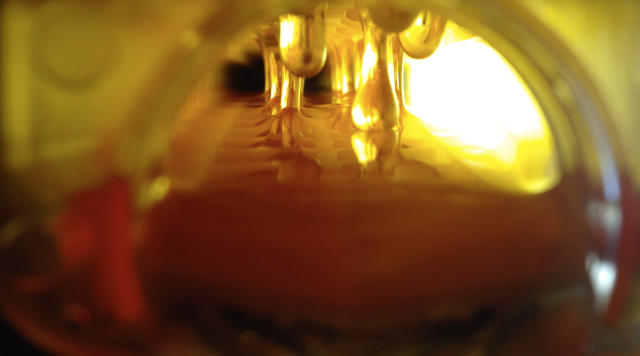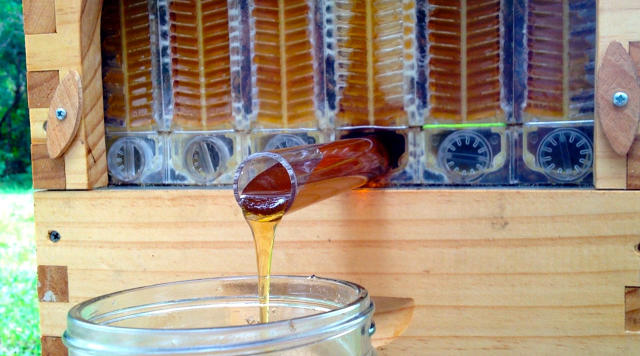Harvesting beehive honey is generally a time-consuming, somewhat stinging process. Now it could be just a matter of turning a lever and watching the sweet stuff flow out.
The “Flow Hive”—developed by a father and son duo in Australia—represents real technological progress. The traditional process of honey extraction involved sedating bees with smoke, removing plates, stripping down the comb, and then spinning the mixture with a centrifuge to get liquid honey—all while wearing a heavy suit. In a word: tedious. The “Flow Hive” needs little human intervention; when you see the plates are full of honey, you just twist a lever to have the honey fall down.

Cedar Anderson and his dad Stuart started working on the idea about 10 years ago and they’ve been through plenty of iterations. First, they tried turning the combs on their side and letting the honey drop out. It didn’t. Then they tried hexagonal pistons to break apart the side of each cell. It sort of worked.
The breakthrough came when they started splitting the cells vertically from the top, so one side of the cells drops down halfway through the next layer. The honey flows through S-shaped streams to a collector at the bottom, then out through pipes.
“One thing we didn’t realize was that capillary action comes in and helps with the viscosity of the honey,” says Stuart, the father. “Not only does the honey flow down, it seems to really draw itself out, so the comb empties itself. It’s almost to the same extent as if we had spun it in a centrifuge.”
The Andersons, who are from Byron Bay, near Brisbane, put their invention on Indiegogo and it’s done very well. It’s available in three sizes: a minimal three-plate set that you can add to an existing hive, a bigger plate set, and a full hive plus all the trimmings (for $600). Shipping is set for the end of 2015.

Traditionalists have complained the Flow Hive will lead to lazy beekeeping, but Cedar and Stu aren’t having a bit of it. They say the hive increases visibility and could make keepers more knowledgeable about their bees. “People have had windows on beehives forever, but usually it’s looking on to the side of the frame,” Stu says. “We can see between the frames, see how the healthy the bees are, and how they’re working in the cells.”
Remarkably, the bees seem not to notice that their honey goes missing. After a short interval, they start chewing off the wax from the partly pre-formed cells and start depositing their honey once again.